
2023 Tata Nexon: Punching Above!
- Sep 6, 2023
- Views : 6218

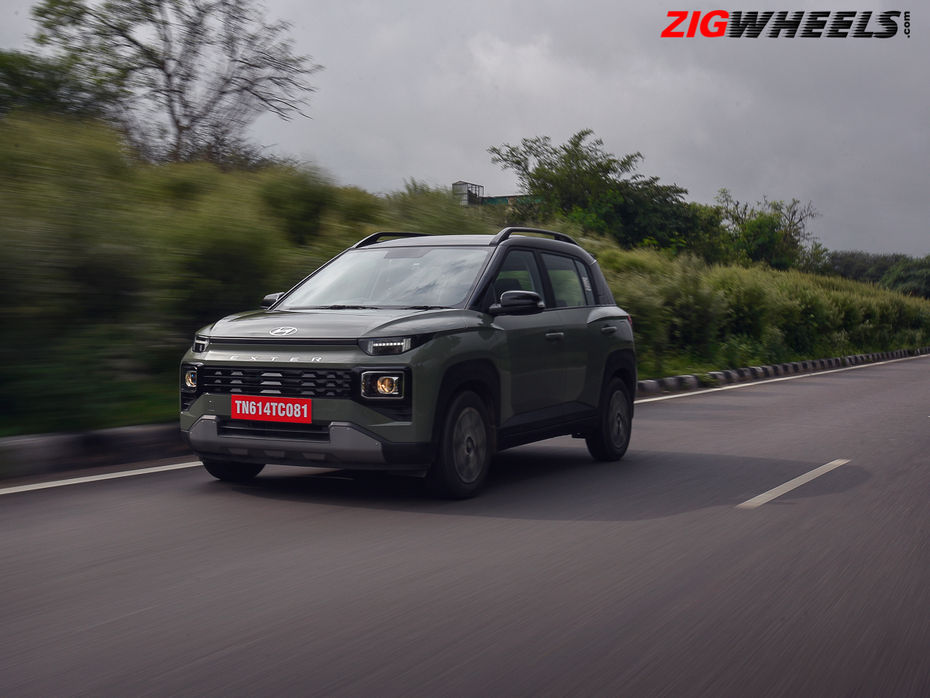
A sub Rs 10-lakh budget would once have you opting for a car that didn’t do much beyond the basics. Today, though, they’re kitted up well enough to potentially make a step-down in budget a step-up in the real world. The Hyundai Exter is a city-focused car priced between Rs 6 lakh and Rs 10 lakh, ex-showroom. Fundamentally, the Hyundai Exter SUV-fies the formula of the Grand i10 Nios, delivering a funkier package in the process
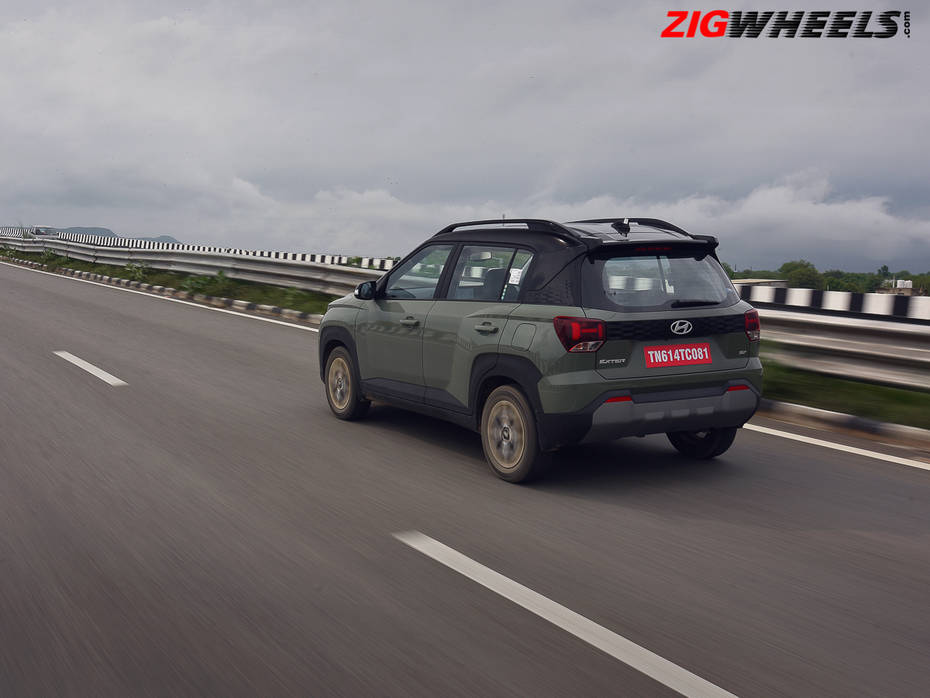
The Hyundai Venue isn’t an especially large car to begin with. After all, it’s called a sub-compact SUV. To that end, the Hyundai Exter is only marginally smaller than its big brother. What Hyundai has smartly done to amplify the Hyundai Exter’s size, is focus on how tall it looks. The roof rails, in particular, have been raised a good deal and flow into a rather large rear spoiler.
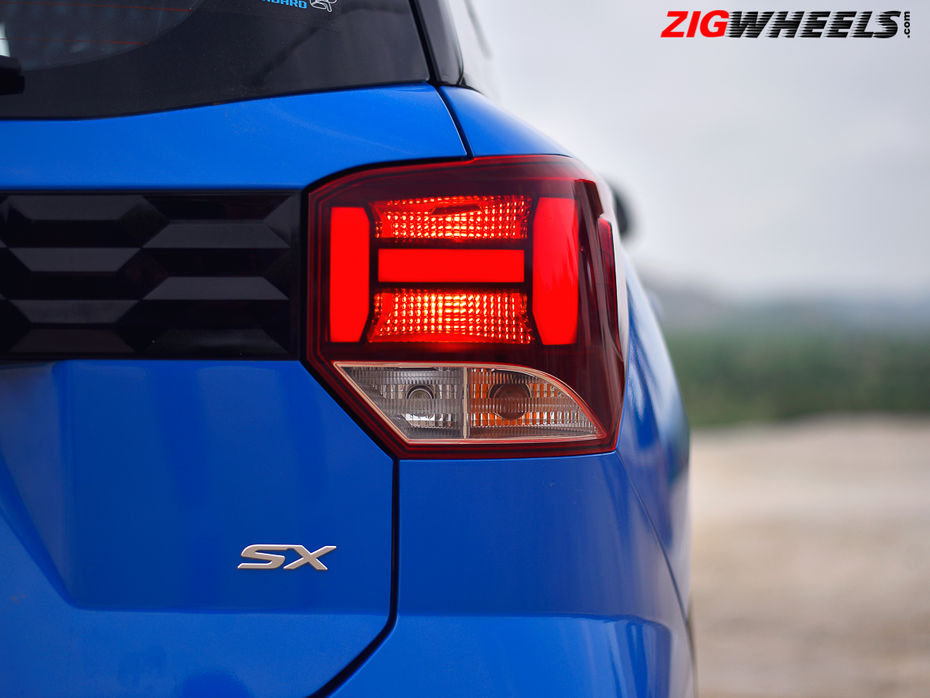
There are plenty of intriguing elements to the design. The window line is quite tall, the glass area dominates the car’s profile, there are patterned panels for the front grill, near the C-pillar and on the tailgate, and the body cladding is plenty chunky to amplify the SUV appeal of this small car. The H-pattern DRL (daytime running lights) are mirrored by a similar outline in the taillight.
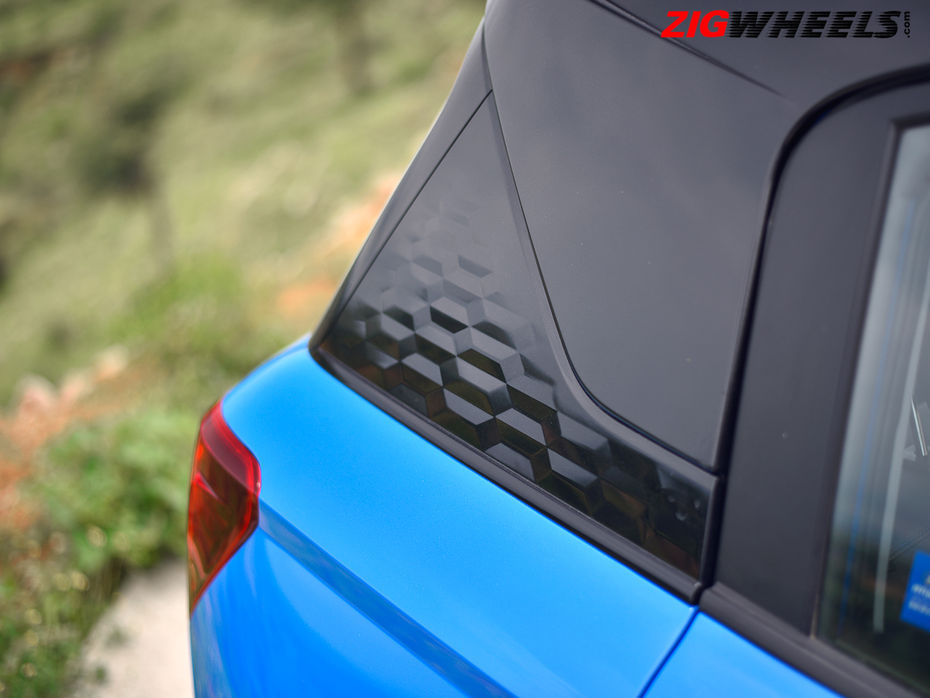
the automobile community
The Hyundai Exter is typically Hyundai in its design, in that the designers haven’t held back in playing with shapes, patterns, cuts, creases or flares. Even the design of the 15-inch alloys is anything but subtle. But the elements do work together to make for a car that’s attention-grabbing and is anything but subtle to begin with, especially in the Ranger Khaki or Cosmic Blue colours.
Alternatives like the Tata Punch or Citroen C3 may not have as much going on in terms of styling elements, but if you prefer simpler designs that are likely to age better, you’d tilt towards them.

The Hyundai Exter isn’t only an SUV alternative to the Grand i10 Nios, it’s also the hatchback’s platform partner. You get hints of this in the shared wheelbase (2450mm) and with the in-cabin experience as well. The cabin materials are par for the course – hard but smooth-finish plastics make up most of the cabin – though touch points like the leather steering wheel, steering controls or AC knobs feel nice to use. Not a rich or premium cabin but decent nonetheless.
The seats themselves offer great support with fabric in the middle outlined by leatherette upholstery. Driver seat-height adjustment comes as standard but the steering is only tilt-adjustable.
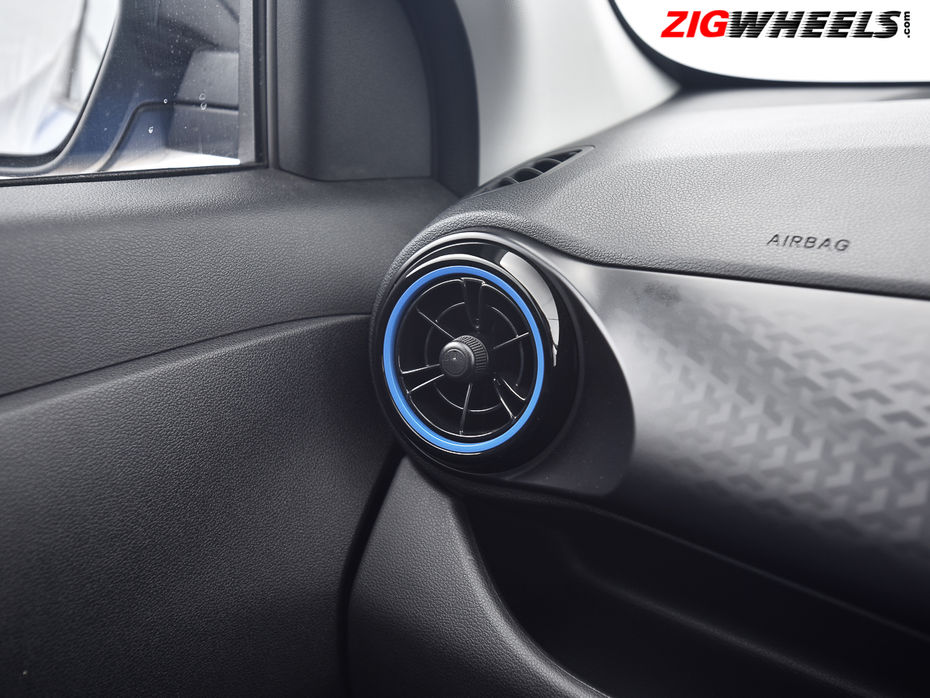
While the Exter does get a black interior, there are certain changes that are colour specific.
|
Exterior |
Interior |
|
Cosmic Blue/Cosmic Blue With Black Roof |
Cosmic blue contrast finish on the seats and interior trim |
|
Ranger Khaki/Ranger With Black Roof/Atlas White With Black Roof |
Light sage contrast finish on the seats and interior trim |
|
Starry Night/Fiery Red/Atlas White/Titan Grey |
Silver contrast finishers on the seats and interior trim |
The Hyundai Exter’s cabin is wide enough for four. The legroom and footroom is accommodating enough even for someone who is around six feet tall and there’s adequate headroom for users even taller than that. But seating three at the rear will be a squeeze. Additionally, there is no headrest for the middle occupant, although they do get a 3-point seatbelt.
Rear AC vents are offered in all but the base EX variant, but Hyundai has skipped armrests in either row; a miss that will especially irk Exter AMT owners. That aside, the Exter is rich in features with the kit including:
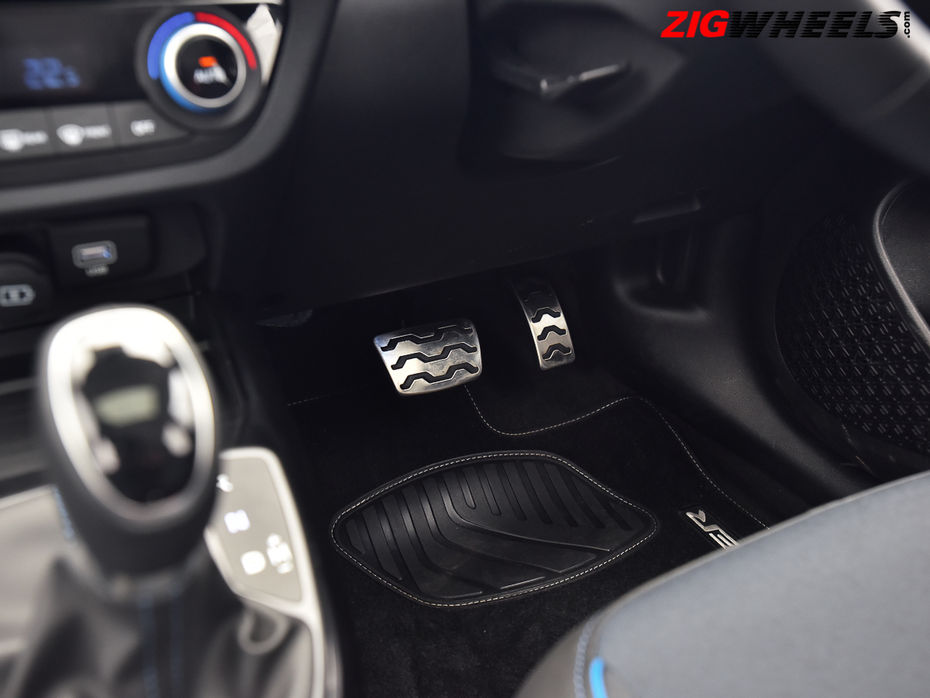
Electric sunroof
Auto AC
Digital instrument cluster
8-inch touchscreen with Android Auto and Apple CarPlay*
Wireless phone charger
Cooled glovebox
Cruise control
Smart key with push-button start
Connected car tech
*Wireless Apple Carplay/Android Auto unavailable
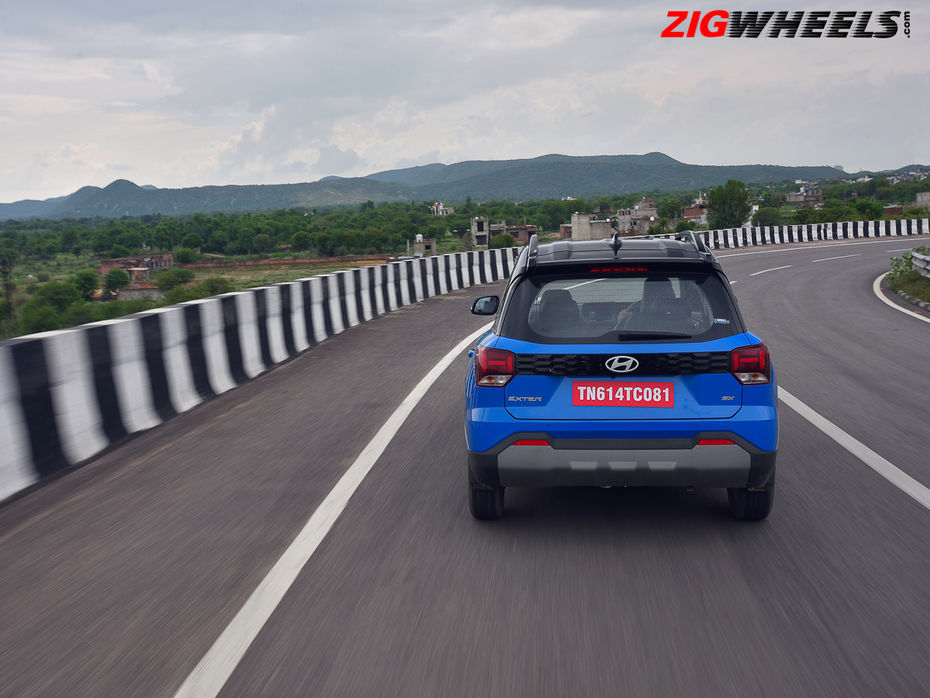
At 391 litres, the boot space is quite generous; larger than even B2 segment hatchbacks like the Honda Jazz. Two medium-sized suitcases can be placed here, although you may have to detach the parcel tray to get the second one in. Alternatively, you can store a few trolley bags/soft bags to manage a weekend’s trip. The 14-inch steel-rimmed spare tyre sits under the boot floor.
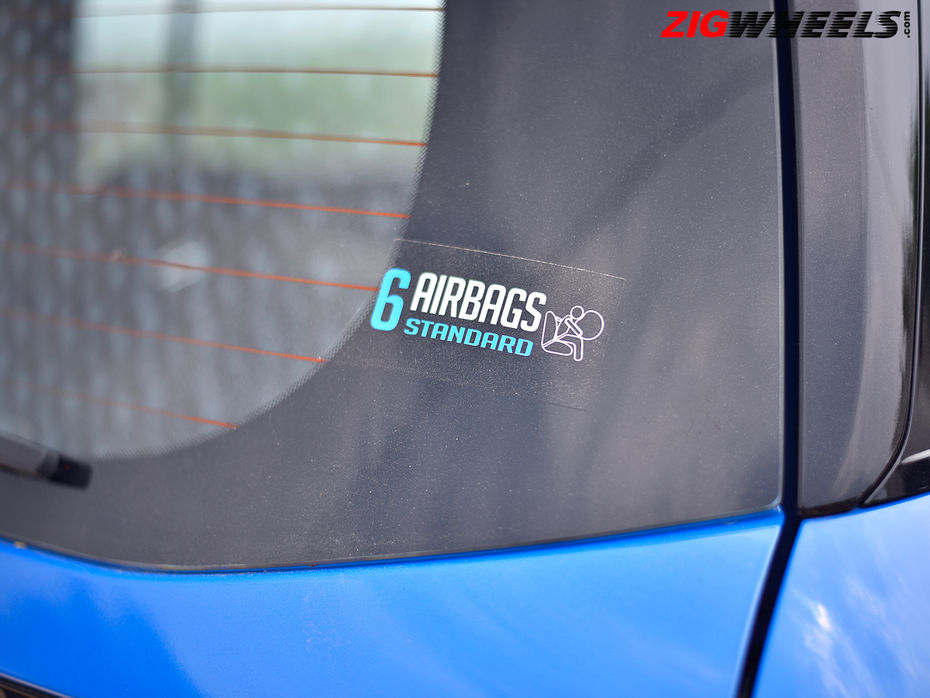
Six airbags, ABS with EBD, and rear parking sensors come as standard. Higher variants add ISOFIX, a rear camera, highline tyre pressure monitoring, stability control, hill-start assist and auto headlights. The SX (O) connect also adds a dual-view dashcam that offers a frontal and in-cabin view.
Hyundai also claims to have made structural enhancements to improve crash safety competence, though the Hyundai Exter has not been crash tested by an independent authority yet.
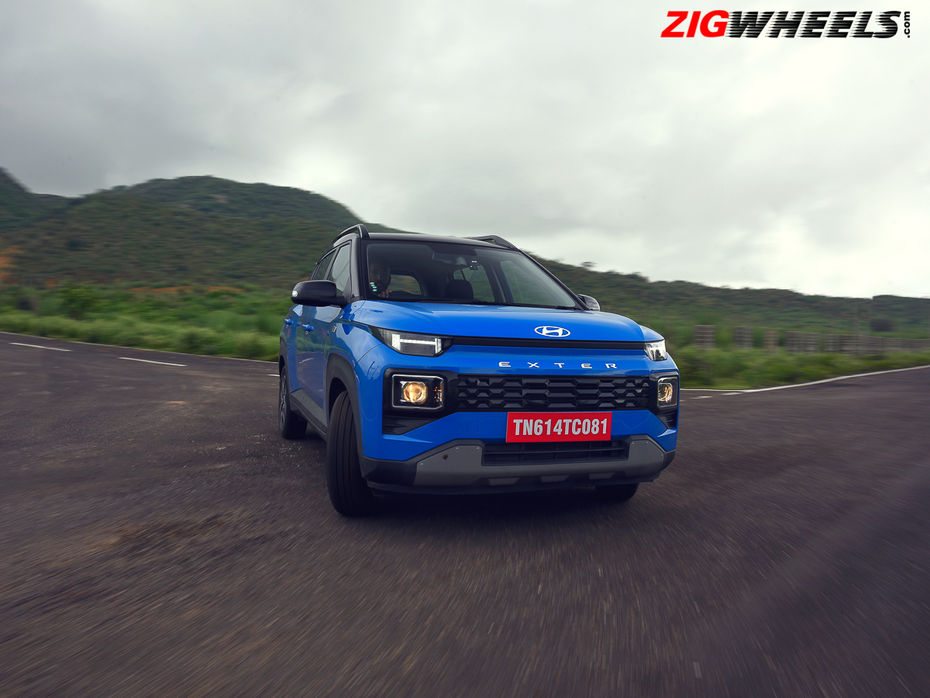
The Hyundai Exter is powered by a 1.2-litre 4-cylinder petrol engine that’s famous for its refinement and ease of use for city-slicking. This same engine is also available with a factory-fit CNG kit paired only with a 5-speed manual transmission, while the petrol is also offered with an optional 5-speed AMT.
Power delivery is very new driver-friendly and there is no sudden spike in performance as you build the revs. Combined with the light steering and light pedals, the Hyundai Exter makes for a hassle-free drive even with a manual transmission.

Where this engine will need a push, though, is out on the highway. Cruising at 80-100kmph is convenient but overtakes on the expressway – or on inclines – will likely warrant a downshift and you will have to keep the engine at 3000rpm or higher.
Thankfully, even with the optional 5-speed AMT, you can make the best use of this engine, irrespective of the drive scenario. You can tell this is an automated manual transmission but they’ve still managed to control shift shock quite well. It doesn’t feel lazy or dimwitted when you need it to kick down either. For added convenience, the AMT comes with both a tiptonic style manual mode, and paddle-shifters!
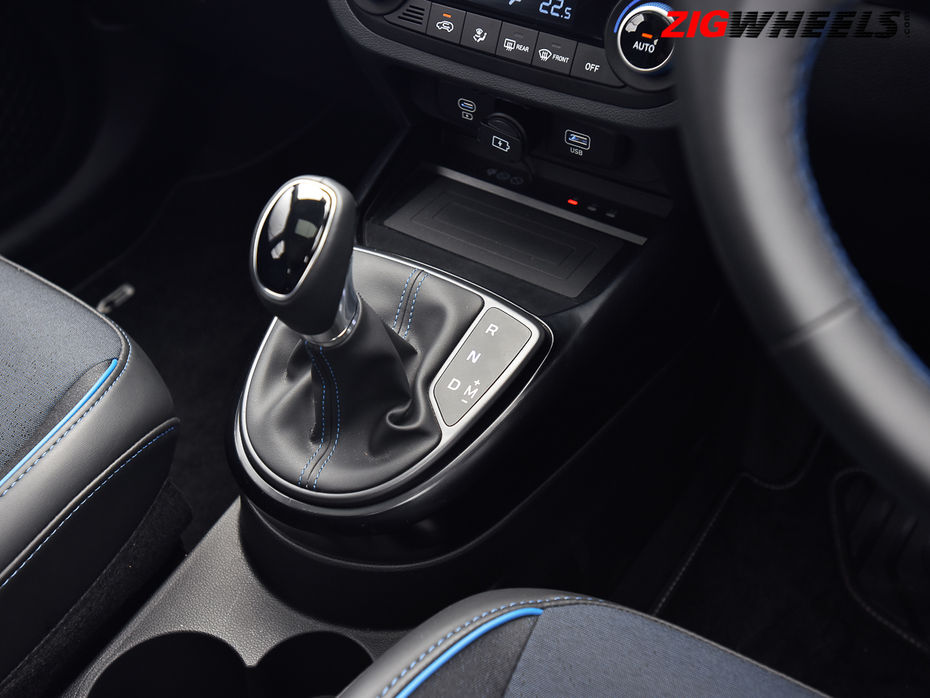
The transmission also allows you to stay at high revs when needed, say, for overtakes on inclines. It will auto-upshift even in manual mode but only when you rev it well past the point we’d deem necessary (~6000rpm).
For inclines, the Hyundai Exter does get hill assist for added safety, but on slow crawls uphill it can roll back a bit before the transmission’s creep mode gets it going again, so it’d be safe to keep the handbrake, er, handy.
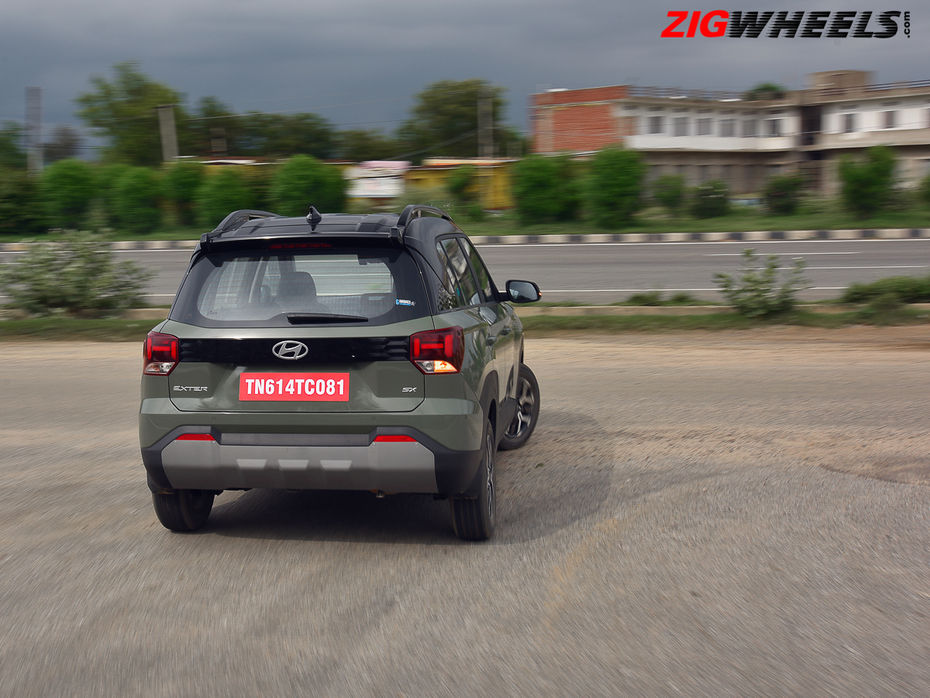
As for ride comfort, Hyundai has managed to deliver a good balance. The Grand i10 Nios does offer a slightly cushier ride at low speeds but the Hyundai Exter deals with bad roads comfortably. Even sharper bumps are heard more than they’re felt and the high speed manners are good too. Tackling undulations at 80-100kmph, with even four people on board, the Hyundai Exter never felt bouncy or too soft. However, the highways leading out of Jaipur are quite smooth, so we’d like to see how the Hyundai Exter behaves on bumpy concrete roads like those on the Mumbai-Pune Expressway.
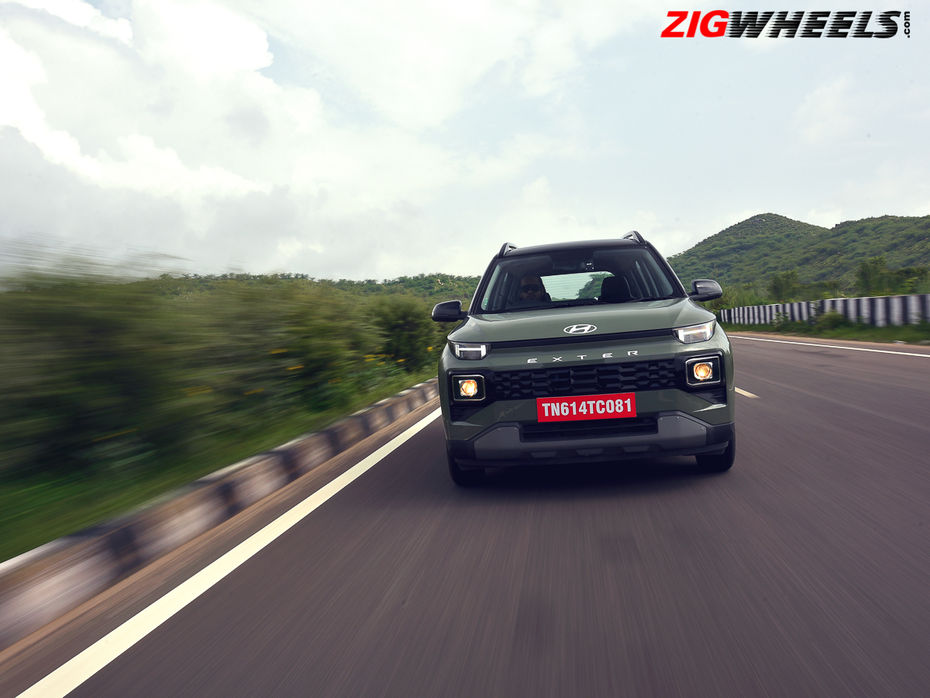
The Hyundai Exter looks like something funky and unusual but at its core it’s a sensible daily drive that gives you a lot of bang for buck both with its features and practicality.
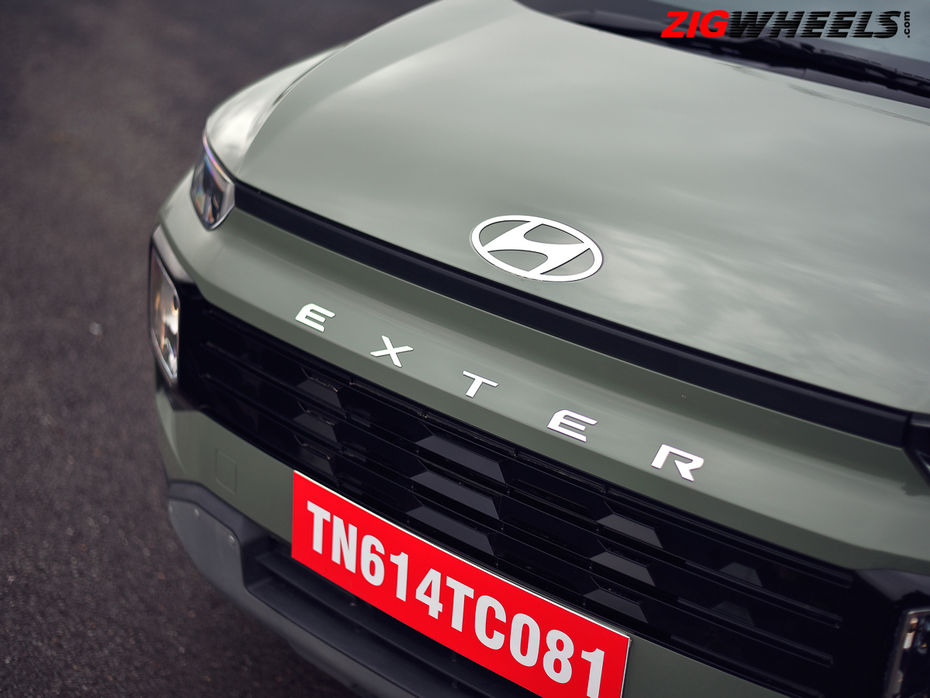
This is a car that could be bought by, or for, a lot of young buyers who’d like their car to have a little personality, even if that variable is largely a matter of how the Hyundai Exter looks. But underneath its fancy-ish skin is a likeable little city car for the family.
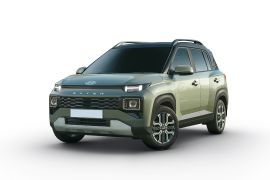

2023 Tata Nexon: Punching Above!

Nissan Magnite Facelift Review: Just Three Changes?

Hyundai Venue Facelift 2022 Review | A Lot More Desirable?

Pure Motoring With Hyundai | Exter, Verna & IONIQ 5 | ZigWheels.com
 Hyundai Grand i10 Nios
Hyundai Grand i10 Nios
 Maruti Baleno
Maruti Baleno
 Toyota Taisor
Toyota Taisor
 Tata Nexon
Tata Nexon
 Renault KWID
Renault KWID
India's largest automotive community
 Hyundai Creta
Rs. 11.10 Lakh
Hyundai Creta
Rs. 11.10 Lakh
 Hyundai Venue
Rs. 7.94 Lakh
Hyundai Venue
Rs. 7.94 Lakh
 Hyundai Verna
Rs. 11.07 Lakh
Hyundai Verna
Rs. 11.07 Lakh
 Hyundai i20
Rs. 7.04 Lakh
Hyundai i20
Rs. 7.04 Lakh
 Hyundai Creta Electric
Rs. 17.99 Lakh
Hyundai Creta Electric
Rs. 17.99 Lakh
 Hyundai Creta
Rs. 11.10 Lakh
Hyundai Creta
Rs. 11.10 Lakh
 Tata Punch
Rs. 5.99 Lakh
Tata Punch
Rs. 5.99 Lakh
 Mahindra Thar ROXX
Rs. 12.99 Lakh
Mahindra Thar ROXX
Rs. 12.99 Lakh
 Tata Nexon
Rs. 7.99 Lakh
Tata Nexon
Rs. 7.99 Lakh
 Mahindra XUV700
Rs. 13.99 Lakh
Mahindra XUV700
Rs. 13.99 Lakh